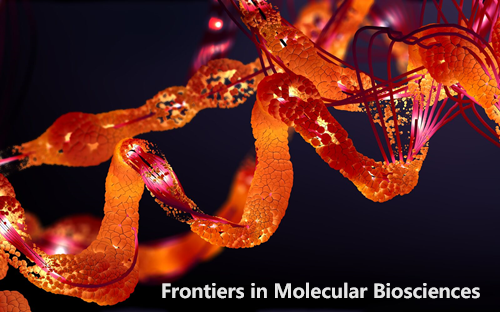Role of 14-3-3 protein family in the pathobiology of EBV in immortalized B cells and Alzheimer’s disease
IF 3.9
3区 生物学
Q2 BIOCHEMISTRY & MOLECULAR BIOLOGY
引用次数: 0
Abstract
Background and AimsSeveral studies have revealed that Epstein-Barr virus (EBV) infection raised the likelihood of developing Alzheimer’s disease (AD) via infecting B lymphocytes. The purpose of the current investigation was to assess the possible association between EBV infection and AD.MethodsThe microarray datasets GSE49628, GSE126379, GSE122063, and GSE132903 were utilized to extract DEGs by using the GEO2R tool of the GEO platform. The STRING tool was used to determine the interaction between the DEGs, and Cytoscape was used to visualize the results. The DEGs that were found underwent function analysis, including pathway and GO, using the DAVID 2021 and ClueGo/CluePedia. By using MNC, MCC, Degree, and Radiality of cytoHubba, we identified seven common key genes. Gene co-expression analysis was performed through the GeneMANIA web tool. Furthermore, expression analysis of key genes was performed through GTEx software, which have been identified in various human brain regions. The miRNA–gene interaction was performed through the miRNet v 2.0 tool. DsigDB on the Enrichr platform was utilized to extract therapeutic drugs connected to key genes.ResultsIn GEO2R analysis of datasets with |log2FC|≥ 0.5 and14-3-3 蛋白家族在永生 B 细胞中的 EB 病毒和阿尔茨海默病的病理生物学中的作用
背景和目的多项研究表明,Epstein-Barr病毒(EBV)感染会通过感染B淋巴细胞提高阿尔茨海默病(AD)的发病几率。方法 利用 GEO 平台的 GEO2R 工具提取微阵列数据集 GSE49628、GSE126379、GSE122063 和 GSE132903 中的 DEGs。使用 STRING 工具确定 DEGs 之间的相互作用,并使用 Cytoscape 将结果可视化。利用 DAVID 2021 和 ClueGo/CluePedia 对发现的 DEGs 进行功能分析,包括路径和 GO。通过使用MNC、MCC、Degree和cytoHubba的Radiality,我们确定了七个共同的关键基因。基因共表达分析是通过 GeneMANIA 网络工具进行的。此外,我们还通过 GTEx 软件对关键基因进行了表达分析,这些基因已在人类大脑的不同区域被确定。miRNA 与基因的相互作用是通过 miRNet v 2.0 工具进行的。结果在|log2FC|≥0.5且p值为<0.05的数据集的GEO2R分析中,分别鉴定出8386、10434、7408和759个基因。结合不同数据集提取的基因,共鉴定出 141 个共同 DEGs。在 PPI 分析中,共发现了 141 个节点和 207 条边。对有实质性改变的 DEG GO 分析表明,它们与分子功能和生物过程有关,如神经元死亡的正向调控、线粒体的自噬调控、细胞对胰岛素刺激的反应、钙信号调控、细胞器沿微管的运输、蛋白激酶活性和磷酸丝氨酸结合等。京都基因和基因组百科全书》分析发现了神经退行性病变通路中 DEGs 的相关性:多发性疾病、细胞周期和 cGMP-PKG 信号通路。最后,YWHAH、YWHAG、YWHAB、YWHAZ、MAP2K1、PPP2CA 和 TUBB 基因被发现与 EBV 和 AD 密切相关。三个 miRNA,即 hsa-mir-15a-5p、hsa-let-7a-5p 和 hsa-mir-7-5p,被确定能调控与 EBV 和 AD 相关的大多数枢纽基因。结论我们首次发现了AD的新生物标志物和治疗靶点,以及EB病毒感染可能参与AD易感性的生物学机制。
本文章由计算机程序翻译,如有差异,请以英文原文为准。
求助全文
约1分钟内获得全文
求助全文
来源期刊

Frontiers in Molecular Biosciences
Biochemistry, Genetics and Molecular Biology-Biochemistry
CiteScore
7.20
自引率
4.00%
发文量
1361
审稿时长
14 weeks
期刊介绍:
Much of contemporary investigation in the life sciences is devoted to the molecular-scale understanding of the relationships between genes and the environment — in particular, dynamic alterations in the levels, modifications, and interactions of cellular effectors, including proteins. Frontiers in Molecular Biosciences offers an international publication platform for basic as well as applied research; we encourage contributions spanning both established and emerging areas of biology. To this end, the journal draws from empirical disciplines such as structural biology, enzymology, biochemistry, and biophysics, capitalizing as well on the technological advancements that have enabled metabolomics and proteomics measurements in massively parallel throughput, and the development of robust and innovative computational biology strategies. We also recognize influences from medicine and technology, welcoming studies in molecular genetics, molecular diagnostics and therapeutics, and nanotechnology.
Our ultimate objective is the comprehensive illustration of the molecular mechanisms regulating proteins, nucleic acids, carbohydrates, lipids, and small metabolites in organisms across all branches of life.
In addition to interesting new findings, techniques, and applications, Frontiers in Molecular Biosciences will consider new testable hypotheses to inspire different perspectives and stimulate scientific dialogue. The integration of in silico, in vitro, and in vivo approaches will benefit endeavors across all domains of the life sciences.
 求助内容:
求助内容: 应助结果提醒方式:
应助结果提醒方式:


